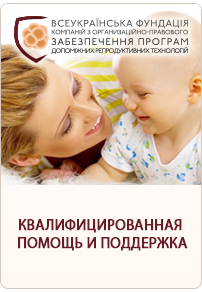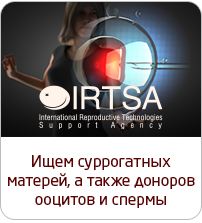Physical therapy can help in getting pregnant
 Infertility can be one of the most heartbreaking medical issues for a woman to deal with. It's hard physically, with so many possible causes and relatively few solutions, but it's also devastating emotionally, as you usually don't discover it until you have set your hopes on having a baby. And with 11 percent of American women suffering from infertility and 7.4 million women shelling out for crazy expensive fertility treatments like in-vitro fertilization, it's one of the biggest healthcare costs in the country. The medical community has made great strides, but even advanced technologies like IVF only have a 20 to 30 percent success rate despite the hefty price tag.
Infertility can be one of the most heartbreaking medical issues for a woman to deal with. It's hard physically, with so many possible causes and relatively few solutions, but it's also devastating emotionally, as you usually don't discover it until you have set your hopes on having a baby. And with 11 percent of American women suffering from infertility and 7.4 million women shelling out for crazy expensive fertility treatments like in-vitro fertilization, it's one of the biggest healthcare costs in the country. The medical community has made great strides, but even advanced technologies like IVF only have a 20 to 30 percent success rate despite the hefty price tag.
A new study have shown promise in helping to treat infertility using a special physical therapy technique that's not only cheaper, but also less invasive and easier than most traditional practices.
Published in the journal Alternative Therapies, the research looked at over 1,300 women who suffer from the three primary causes of infertility: pain during sex, hormonal imbalances, and adhesions. They found that after they went through physical therapy, the women experienced a 40 to 60 percent success rate in getting pregnant. The therapy specifically benefited women with blocked fallopian tubes (60 percent became pregnant), polycystic ovarian syndrome (53 percent), high levels of follicle stimulating hormone, an indicator of ovarian failure, (40 percent), and endometriosis (43 percent). This specialized physical therapy has even helped patients undergoing IVF raise their success rates to 56 percent and even 83 percent in some cases, as shown in a separate study.
The specialized method of physical therapy decreases adhesions, or internal scars that occur wherever the body heals from infection, inflammation, surgery, trauma or endometriosis, says Larry Wurn, lead author and a massage therapist who developed the technique used in the study. These adhesions act like an internal glue and can block fallopian tubes, cover the ovaries so eggs cannot escape, or form on the walls of the uterus, decreasing the chance for implantation. "Reproductive structures need mobility in order to function correctly. This therapy removes the glue-like adhesions that bind structures," he adds.
A similar method widely used by niche physical therapists is called the Mercier technique, says Dana Sackar, member of the American Academy of Fertility Care Professionals. During treatment, the therapist manually manipulates the pelvic visceral organs from the outside—a process that Sackar says isn't terribly painful, but isn't exactly a spa treatment either.
Primarily pushing on a woman's abdomen help boost her baby-making chances by increasing blood flow and mobility. "A malpositioned uterus, restricted ovaries, scar tissue, or endometriosis, can all reduce blood flow to the reproductive organs, limiting fertility," Sackar explains. By repositioning the organs and breaking up scar tissue, blood flow is increased, which, she says, not only makes your reproductive system healthier, but also helps your body to balance out its hormones naturally. "It prepares your pelvis and organs for optimal function, sort of like how you do training runs to prepare your body to run a marathon," she adds.
These techniques also help fertility by addressing the emotional roadblocks, as therapists work closely with patients to address mental needs as well as physical. "Suffering from infertility is extremely stressful, so anything we can do to help reduce that stress is good too. The mind-body connection is very real and very important," Sackar says.
Because it's non-invasive and cost-effective, Sackar recommends trying physical therapy before other fertility treatments. She says she also works closely with patients' OBGYNs and other fertility specialists, using the therapy to enhance their medical options.
So it's worth trying a variety of options to achieve a successful pregnancy. "Some women can snap their fingers and get pregnant like that," Sackar says. "But many women need an ideal situation to conceive and that can take work. So that's what we do with this physical therapy, we help them get to that point."
Source: shape.com
- The central office of IRTSA Ukraine completely restores work
- How we work during the COVID-19 pandemic
- 1st International Congress on Reproductive Law
- Soon Americans may face a new ethical dilemma
- ‘Friends’ star Jennifer Aniston is pregnant with twins
- Image processing technology can impact the success rates of ivf
- Editing genes of human embryos can became the next big thing in genetics
- Supermodel Tyra Banks undergoes IVF
- Scientists discovered a new, safer way for egg freezing
- French scientists have managed to grow human sperm cells in vitro









